Children naturally use their senses to explore their environment. While the five senses – taste, smell, sight, sound and touch – are well known, there are also internal senses such as balance, position, and movement. Messy play activities differ from other types of play as the emphasis on the senses amplifies the activity. Messy play also supports scientific thinking, which involves enquiry, experimentation, hypothesising, researching, and investigating.
Why is it important?
Fine and gross motor skills
Messy play helps children pick up objects, and allow textures and materials to be moulded and flow through their hands and fingers. This type of play helps develop your child’s fine-motor skills – those little movements and muscles in the hands used to hold and control a pencil and cutlery, thread a needle or tie shoelaces. For very young children and babies, the exploration of objects through touch can often end up with the item in question in their mouths! Plan for this and make sure the materials are edible.
Hand-eye coordination, spatial awareness, body control and balance
Hand-eye coordination is when your child tracks the movements of their hands with their eyes, which is essential for reading and decoding. Spatial awareness is the ability of a child to understand where they are in relation to objects or where objects or structures are in relation to each other. Body control and balance is the ability to know where your body parts are in three-dimensional space.
Creativity
Your child will be able to use their imagination in order to create shapes, forms and objects in an exploratory way.
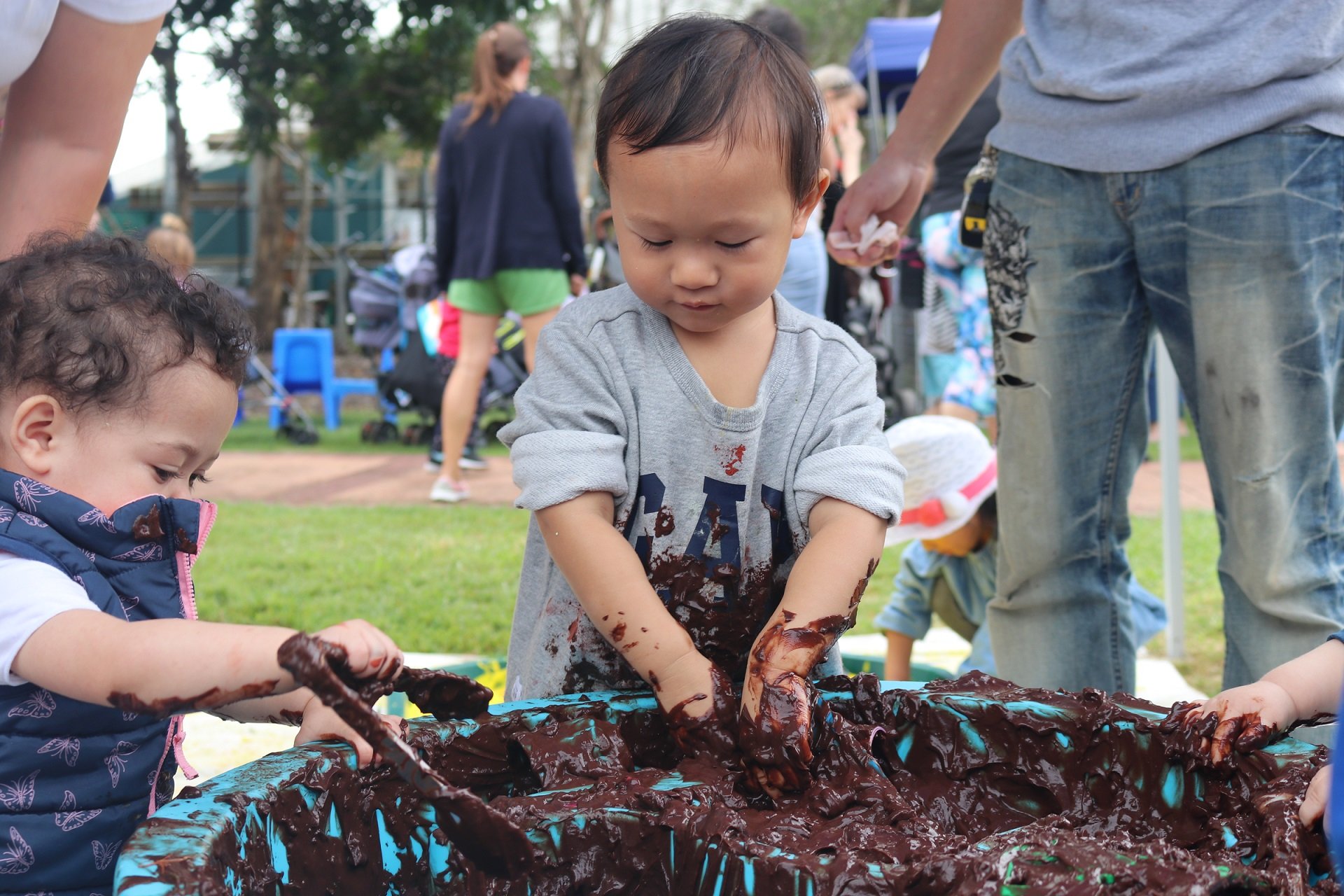
Problem solving
With messy play, your child can increase their concentration and ability to problem solve. They begin to select and use resources appropriately and often see a task through from start to finish. Early science experiments are found in messy play, such as cause and effect and changing solids to liquids.
Language development
Words such as “gooey, crispy, slimy and soft” can be used when your child explores their surroundings by touching different materials. You may hear a few “ickys and yucks” too! This is a good sign as they are starting to make decisions on how things feel. Some materials do genuinely feel “icky”.
Supporting your child’s language development, helping them understand how things feel and how to describe them is aided by adult prompts. Seeing, hearing, touching, tasting, and smelling are all ways children learn to think, feel, and compare their environment and the objects within it. Using multiple senses at the same time stimulates learning and language development.
Building relationships with others
When you child plays with a sibling or a friend, they will chatter along quite happily as they explore the messy materials and their senses are introducing new words into their vocabulary. An opportunity to play alongside or together is a valuable social experience for your child. Learning how to share the workspace, equipment, and experiences is an excellent skill to transfer into later life. Children learn to trust others and cooperate with kindness.
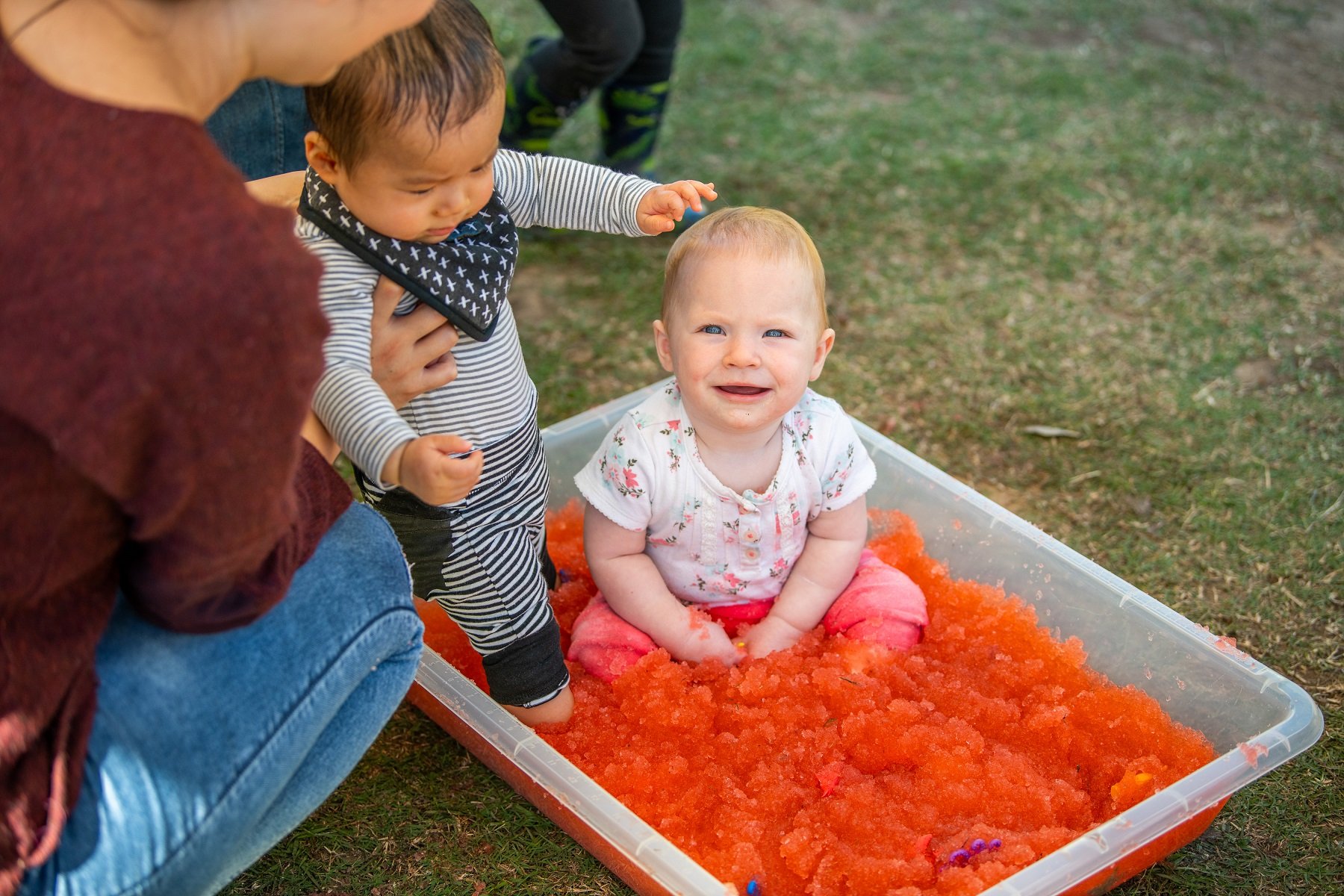
Cognitive development
Messy play for babies and children helps developing brains bridge nerve connections and assists children in learning differences and similarities. The use of sensory material creates hands-on self-directed play, encouraging discovery and development. This approach appeals to children who have different learning and thinking styles.
Inclusive play
Because there’s no right or wrong way to engage in sensory-rich messy play, it’s particularly beneficial to children with special needs and those who enjoy a practical approach to learning.
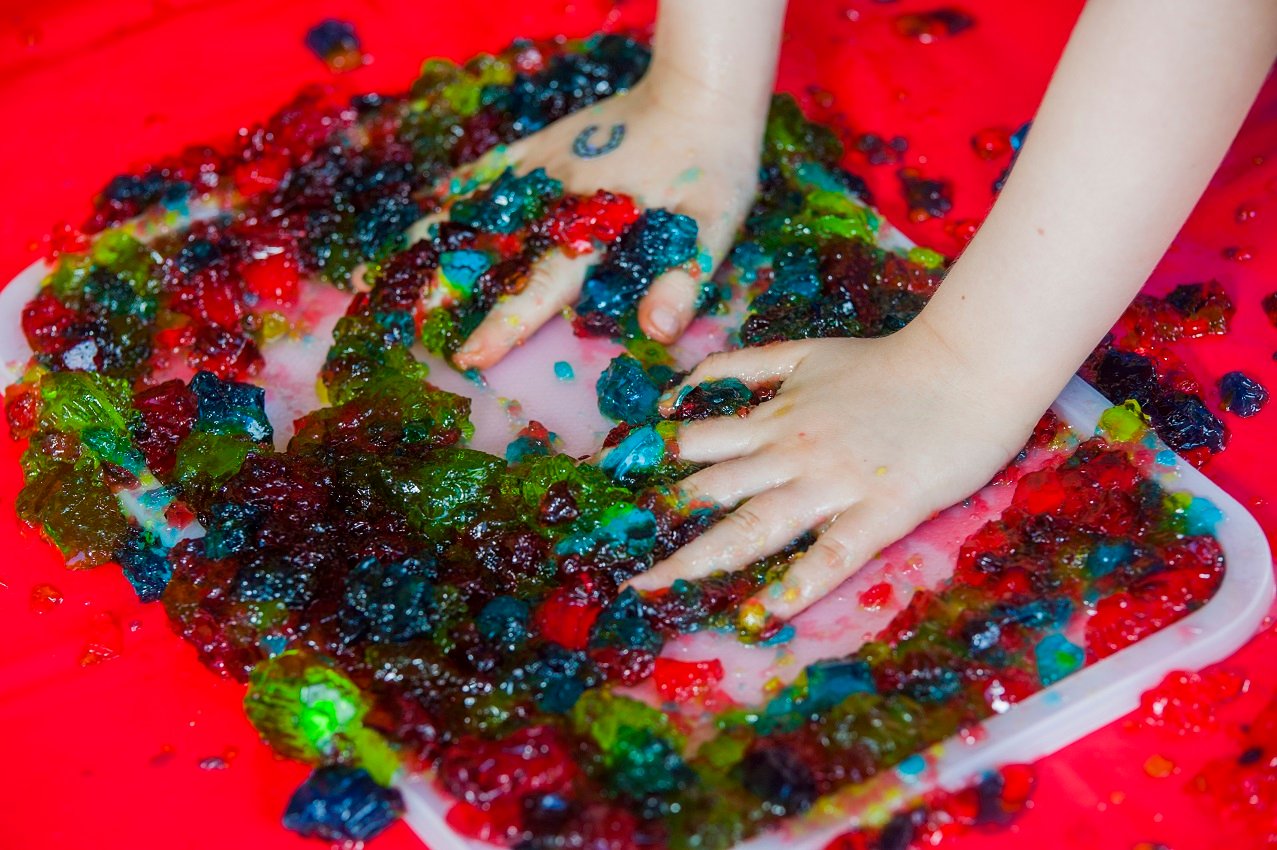
Where can you do it?
Outdoors is ideal for messy play activities, but if you do decide to do messy play inside use plastic tubs, make sure you cover surfaces, and have a damp cloth ready to wipe sticky hands and little eyes and mouths. Remember, as with all play there are always safety considerations. This is particularly true with babies and toddlers and when water-based activities or choking hazards are in play.
What do you need?
Messy play experiences like water play, mud play, jelly, slime, goo, foam, and scented or edible playdough are all cost effective and can stimulate your child’s senses.
Bath time can be a messy play activity. Playing with water, using plastic cups or washed up yoghurt pots to pour, splash. and empty water. Meal times are also great. Allowing your child to savour the taste, smell, and texture of different foods (pasta, cereals, jelly, mashed potato, and even baked beans) provides interesting sensory experiences.
In the natural world there are plenty of opportunities to engage in messy play. Find some sand, puddles to jump in, leaves to gather, or mud to play in; there are endless messy outside play ideas.
Tips to get children involved:
Give children the okay to get messy. Parents shouldn’t be afraid to let things get messy themselves. So, roll up your sleeves and have some fun engaging in messy play with your child! What may look like a mess on the surface is giving your child a truly unique learning experience.
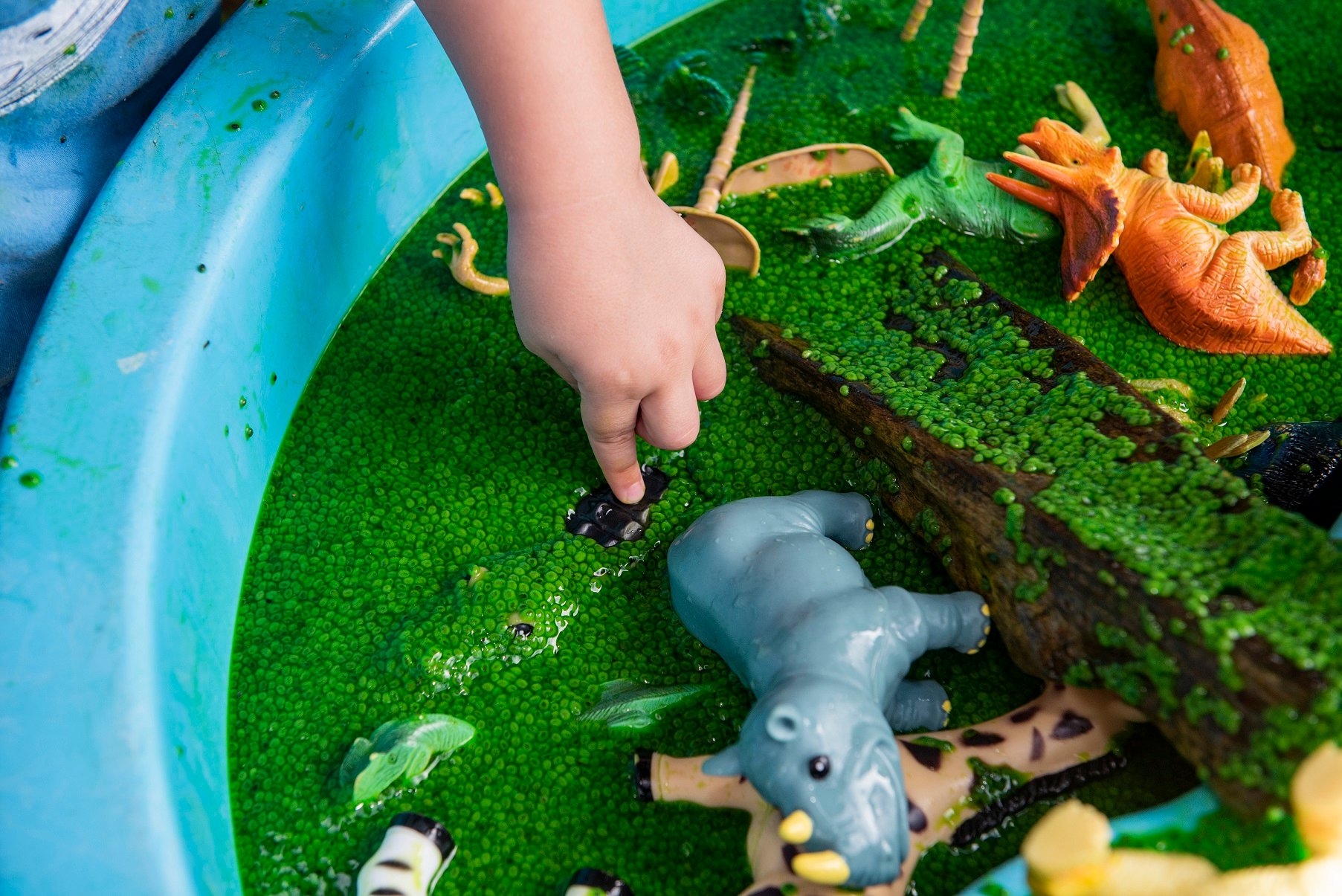

.jpg)
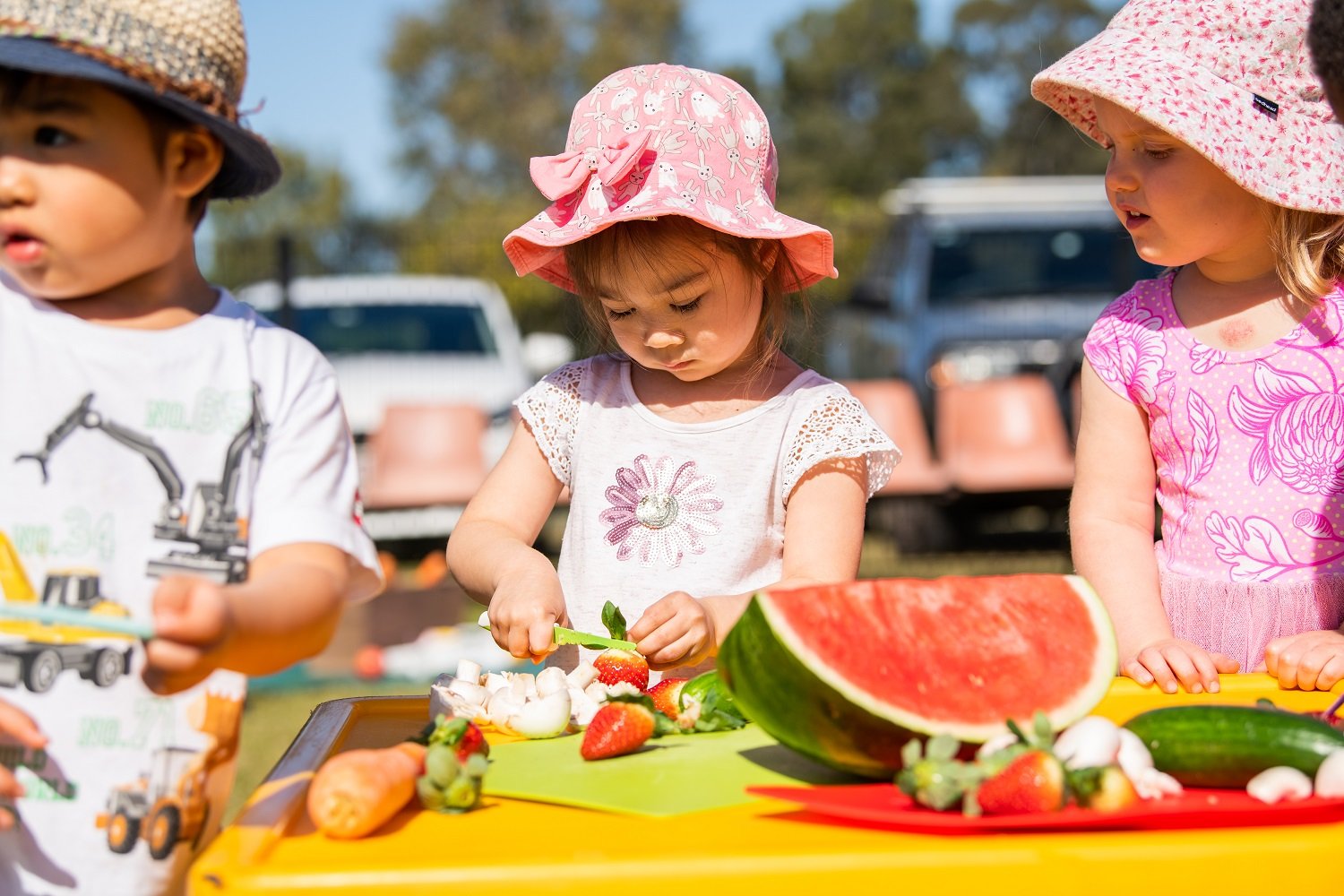
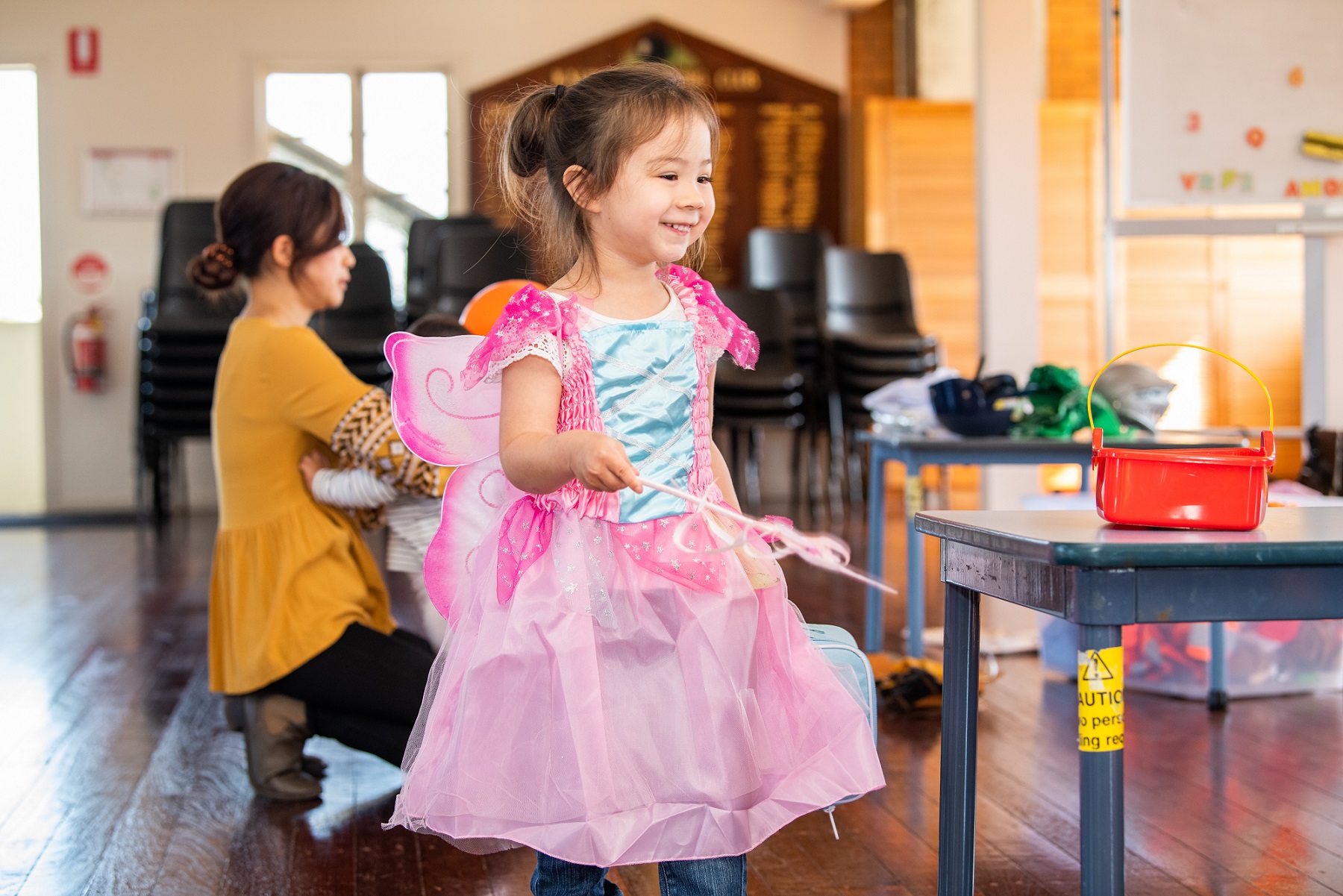
.jpg)

